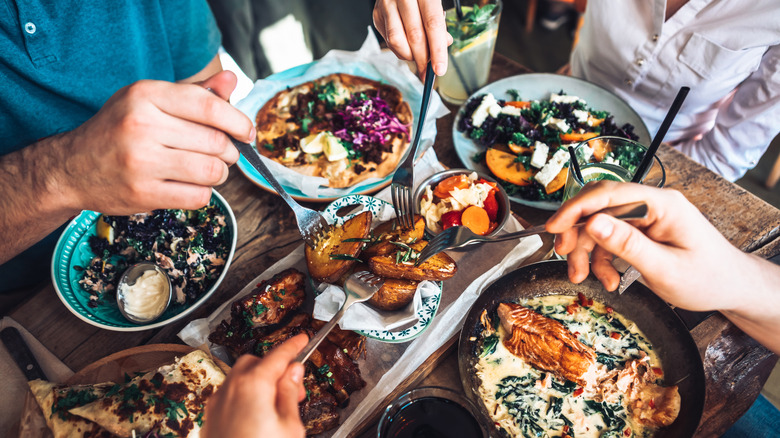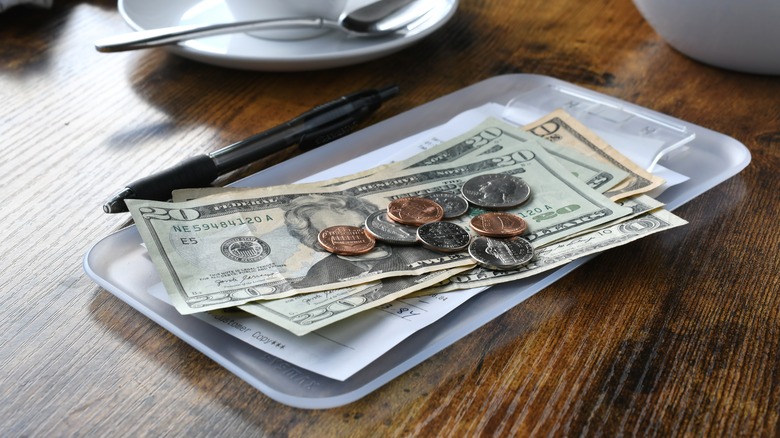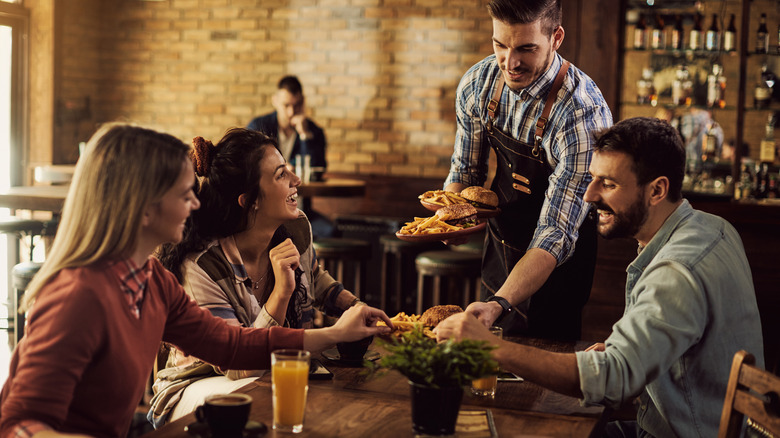Splitting Plates Could Be Considered Bad Restaurant Etiquette. Here's Why
From a diner's perspective, there's no harm in sharing food at a restaurant with a friend or two. Each person saves money and gets a smaller portion, with the ability to share more menu items with the table. However, restaurants feel very differently about plate-splitting, and you can probably guess why.
Firstly, diners sharing plates means fewer entrees are being ordered, bringing in less money for the restaurant. Secondly, if the entree is split in the kitchen, it takes additional time to divide the standard portion between two plates, and time is everything in the restaurant industry. This method of plate-splitting also results in double the dishes and utensils for the price of a single meal.
In larger groups, where sharing is far more likely, diners tend to stay and socialize for longer periods. Being that turnover rates are another crucial key to restaurant success, a group staying longer without making further purchases is effectively taking up space and costing the restaurant potential sales. Worse still, because the bill is overall smaller, the wait staff could end up with a much smaller tip relative to the amount of work they put in.
If you have to split a plate, here's how to do it
Knowing how diners splitting plates can disrupt a restaurant's operations, there are a few ways to make this request a bit less of a hassle. For instance, you might ask for an extra plate with your entree, saving the kitchen staff the task of re-portioning the food. You might also consider compensating for the decreased spending by ordering dessert and/or drinks.
Another good practice is to tip as if you've purchased two meals. Regardless, you should always tip on top of the restaurant's service fee, ensuring the wait staff is fairly compensated for their effort. Don't be surprised if the restaurant charges an additional small fee for plate splitting, either, to account for the extra dishes and work.
That being said, a restaurant and its staff will always prefer that each diner orders one entree to keep everything flowing smoothly. Sure, it may be more food than you can eat, but you can always take your leftovers home and enjoy another meal.
Some restaurants are trying to restrict plate-splitting
Given the challenges associated with diners splitting entrees, it's understandable that some restaurants have implemented policies to mitigate this perceived faux pas. As mentioned previously, some establishments impose a plate-splitting fee, which sometimes discourages diners from sharing a single dish. Other restaurants have raised their entree prices to account for diners sharing, or have even expanded their menus to include smaller (yet not necessarily less expensive) portions.
Of course, some restaurants embrace diners' desire to share, introducing menu items better suited for sampling. These appetizer-inspired dishes are larger and priced accordingly, ensuring diners get the experience they want without shortchanging the restaurant and its staff. Restaurants might also offer deals for ordering multiple, smaller portions, like Panera's "You Pick Two" or Applebee's "2 for $20." In such cases, diners can actually save money by ordering two entrees, making them more inclined to do so rather than split a single dish.



